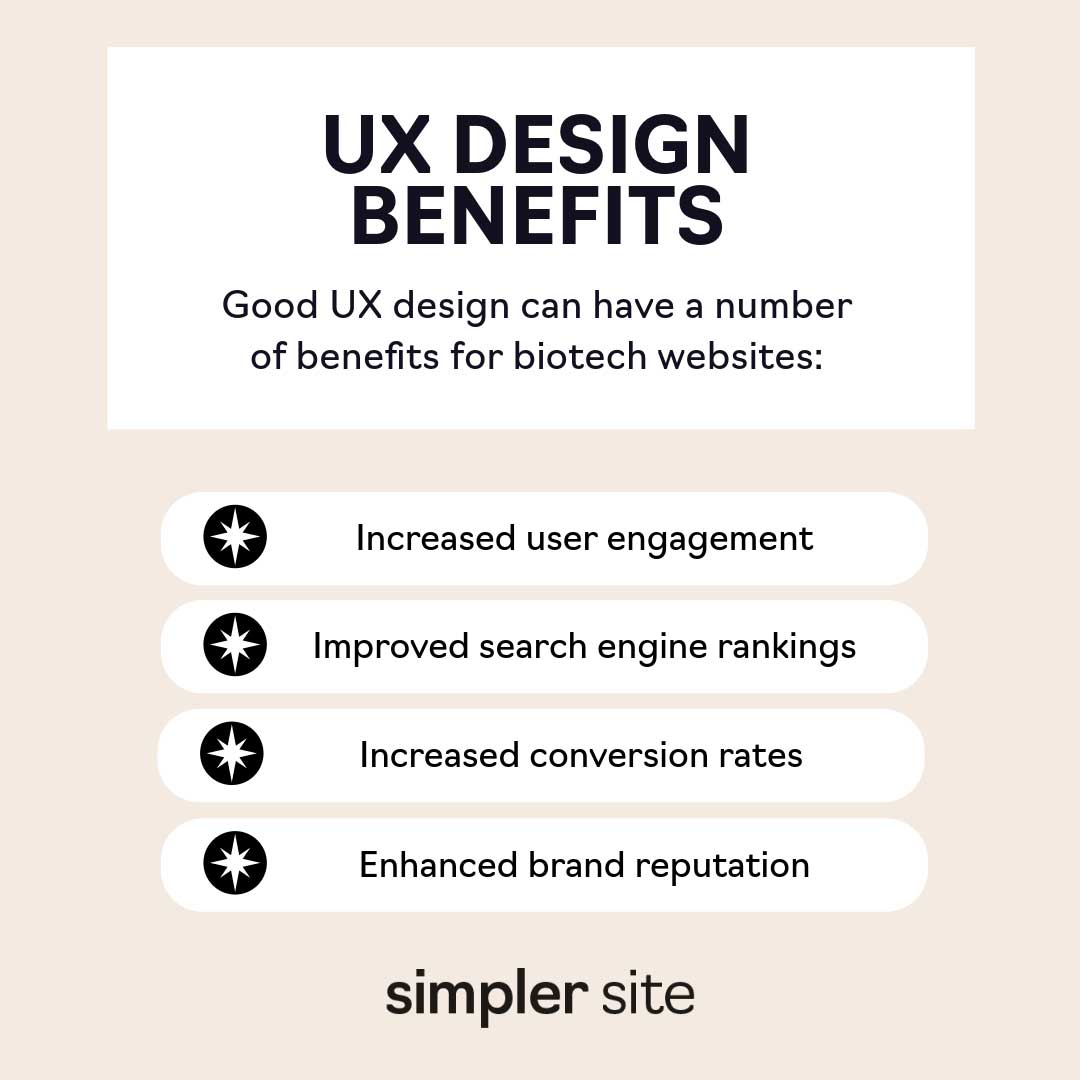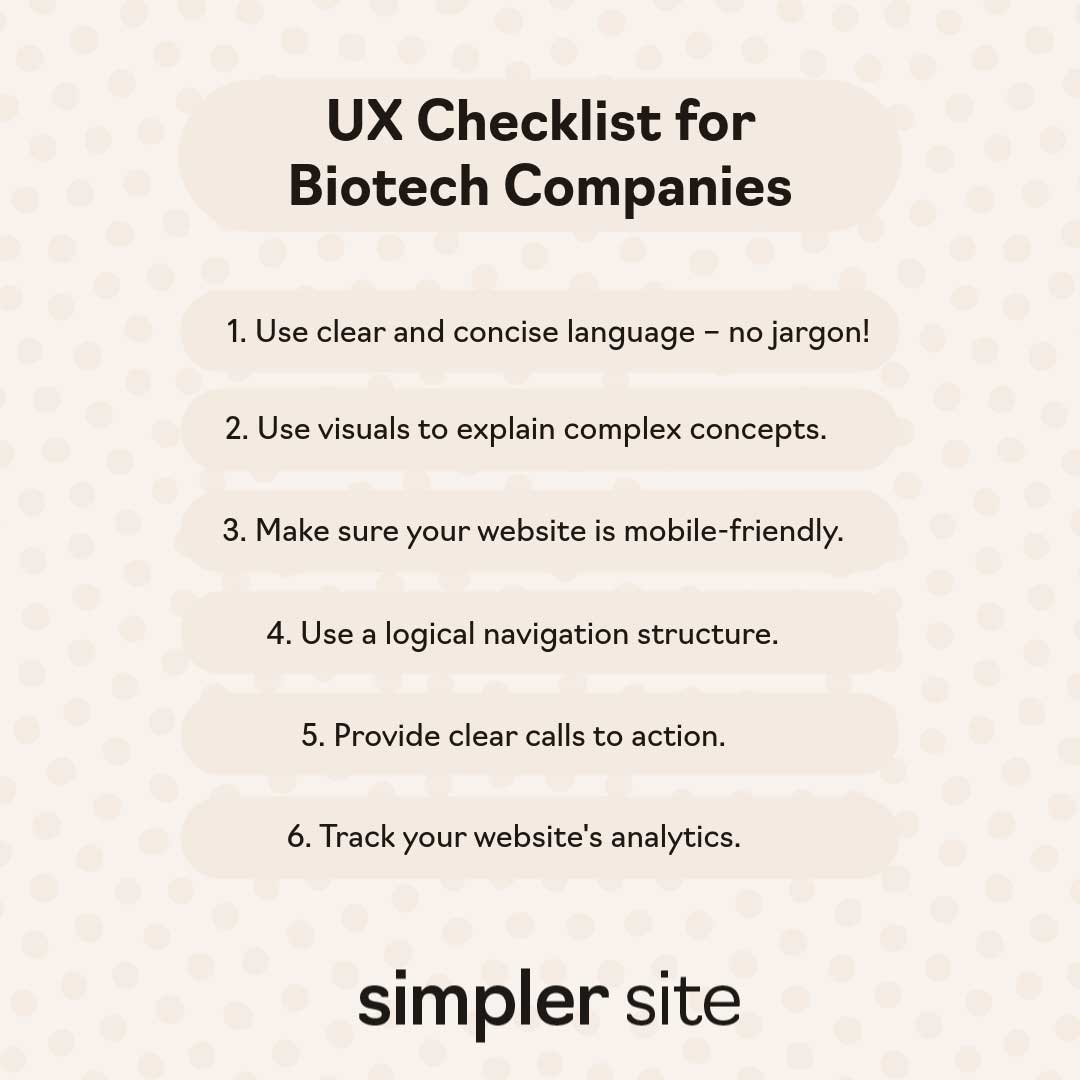Have you ever visited a website that was so confusing and difficult to use, you gave up and left? Or maybe you’ve been to a website that was so full of technical jargon, you had no idea what they were talking about?
If so, you’re not alone. Millions of people experience this every day. And it’s a big problem for biotech companies.
The biotech industry is complex and rapidly changing. Biotech companies need to have websites that can communicate their products and services in a clear and concise way. They also need to build trust with potential customers, who may be unfamiliar with the biotech industry.
That’s where UX design comes in. UX design is the process of creating websites that are easy to use and enjoyable for users. It’s essential for all websites, but it’s especially important for biotech websites.
By following the key elements of good UX design, biotech companies can create websites that are informative, engaging, and easy to use. This will help them to attract and engage visitors, communicate their complex products and services in a clear and concise way, build trust with potential customers, and drive sales and leads.
In this article, we’ll discuss the importance of UX design for biotech websites. We’ll also provide tips on how to create a biotech website that is user-friendly and effective.
The Importance of UX in Biotech Web Design
User experience (UX) design is essential to biotech web design. It can help biotech companies to:
- Attract and engage visitors to their websites. A well-designed biotech website will be easy to use and navigate, and it will provide visitors with the information they are looking for. This will help to attract visitors to the website and keep them engaged.
- Communicate their complex products and services in a clear and concise way. Biotech products and services can be complex, and it can be difficult to explain them in a way that is easy to understand. UX design can help biotech companies to break down complex concepts into smaller, more manageable pieces. This will make it easier for visitors to understand the products and services being offered.
- Build trust with potential customers. Biotech companies are often dealing with potential customers who are unfamiliar with the industry. UX design can help biotech companies to build trust with potential customers by creating a website that is professional, trustworthy, and informative.
- Drive sales and leads. A well-designed biotech website can help to drive sales and leads by providing visitors with the information they need to make a purchase or contact the company. UX design can also help to improve the conversion rate of the website, which is the percentage of visitors who take the desired action, such as signing up for a newsletter or making a purchase.
Biotech companies face a number of specific challenges in creating effective websites. These challenges include:
- The use of technical jargon. Biotech products and services can be complex, and they often use technical jargon that is not familiar to the general public. This can make it difficult for visitors to understand the information on the website.
- The complexity of biotech products and services. Biotech products and services can be very complex, and it can be difficult to explain them in a way that is easy to understand. UX design can help biotech companies to break down complex concepts into smaller, more manageable pieces.
- The need to build trust with potential customers. Biotech companies are often dealing with potential customers who are unfamiliar with the industry. UX design can help biotech companies to build trust with potential customers by creating a website that is professional, trustworthy, and informative.
We’ve seen how UX design is essential for biotech websites. Let’s now take a look at some of the specific ways that good UX design can benefit biotech websites
Benefits of Good UX Design for Biotech Websites
Good UX design can have a number of benefits for biotech websites, including:
- Increased user engagement. A well-designed biotech website will keep users engaged and make them more likely to stay on the site and learn more about your company and products. This is important because the longer users stay on your site, the more likely they are to take the desired action, such as signing up for your email list or making a purchase.
- Improved search engine rankings. Google and other search engines take UX into account when ranking websites, so a well-designed website will help you improve your search engine rankings. This is important because it will make it easier for potential customers to find your website when they are searching for information about your products or services.
- Increased conversion rates. A well-designed website will make it easier for users to find the information they need and take the desired action, such as signing up for your email list or making a purchase. This is important because it will help you increase sales and leads.
- Enhanced brand reputation. A well-designed website will make a positive impression on users and help to enhance your brand reputation. This is important because it will make users more likely to trust your company and do business with you.

Now that we know the benefits of good UX design, let’s take a look at how to implement it.
Best Practices for UX in Biotech Web Design
Here are some best practices for implementing good UX design on your biotech website:
- Use clear and concise language that is easy to understand. Biotech websites often deal with complex topics, so it is important to use language that is easy for your target audience to understand. Avoid using technical jargon or acronyms unless you are sure that your audience will be familiar with them.
- Use visuals to help explain complex concepts. Visuals can be a great way to break up text and make your website more engaging. They can also be used to help explain complex concepts in a way that is easy to understand.
- Make sure your website is mobile-friendly. More and more people are using their mobile devices to access the internet, so it is important to make sure that your website is mobile-friendly. This means that your website should be optimized for small screens and easy to navigate with a touchscreen. You can check to see if your website passes Google’s mobile-friendly test.
- Use a logical navigation structure. Your website’s navigation should be easy to understand and use. Users should be able to easily find the information they are looking for without having to hunt around.
- Provide clear calls to action. Tell your users what you want them to do! Whether you want them to sign up for your email list, make a purchase, or learn more about your company, make sure you provide clear calls to action throughout your website.
- Track your website’s analytics to measure its effectiveness. Once your website is up and running, it is important to track its analytics to see how it is performing. This will help you identify areas that need improvement and make changes to improve your website’s user experience and enhance your biotech digital marketing efforts.

Use UX Design to Create a Biotech Website that Converts
UX design is essential for biotech websites. By following the key elements of good UX design, biotech companies can create websites that are informative, engaging, and easy to use. This will help them to increase user engagement, improve search engine rankings, and boost conversion rates.
If you are a biotech company, we encourage you to invest in UX design for your website. It is an investment that will pay off in the long run.
Thank you for reading! We hope you found this article helpful. If you have any questions about UX design for your biotech website, please don’t hesitate to contact us. We would be happy to help you create a website that will help you achieve your business goals.